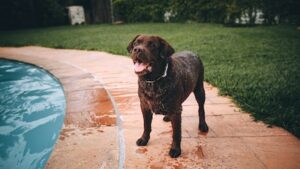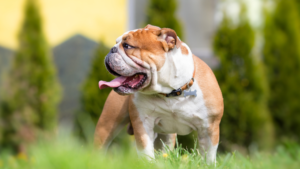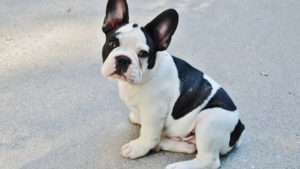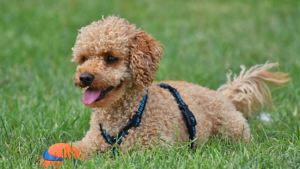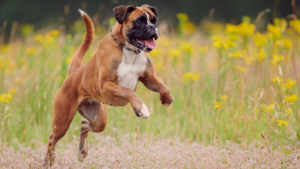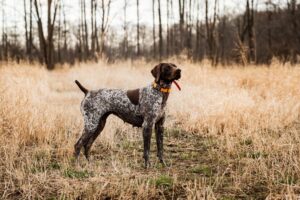With nearly 90% of renters owning pets, finding the best dog breeds for apartment living has never been more crucial. In this comprehensive guide, we explore the top breeds that thrive in smaller spaces, ensuring both you and your furry friend enjoy a harmonious living environment.
From low-energy lap dogs to quiet companions, discover the perfect breed that fits your lifestyle. Whether you’re a first-time dog owner or a seasoned pet parent, our guide offers valuable insights and practical tips to make apartment living with a dog a breeze.
Dive in to learn about the best apartment dogs and how to create a pet-friendly home that caters to their needs. Ready to find your ideal canine companion? Let’s get started on this exciting journey to happier, healthier apartment living with your new best friend!
Table of Contents
Introduction
This comprehensive guide tries to investigate numerous dog breeds that adapt well to apartment lifestyles, taking into account their size, temperament, activity requirements, and apartment compatibility.
Factors to Consider When Choosing The Best Dog Breeds For Apartments
Let us see what factors to consider when choosing good dog breeds for apartments.
1. Size and Space Requirements
Consider the available space in your apartment before you choose to get the best dog breeds that can fit and move around comfortably without feeling cramped or constrained. Larger breeds may struggle in smaller apartments with little area to wander and extend their legs. Smaller breeds, on the other hand, are more suited to apartments because they require less area to move around. However, it is vital to note that individual energy levels and exercise requirements might differ within each breed, therefore those considerations must also be addressed.
Consider the dog’s activity level as well as its size. Small breeds with strong energy levels, such as the Pomeranian or Chihuahua, may require more area to burn off their energy than other small breeds with a calmer temperament.
2. Exercise and Energy Levels
When living in an apartment, the quantity of exercise a dog needs is a crucial factor. The best dog breeds for apartments have a lot of energy and need a lot of physical activity and mental stimulation to keep them happy and healthy. If you lead an active lifestyle and love outdoor activities, a high-energy breed like a Basenji or Whippet may be suitable.
If you live a more relaxed lifestyle or have limited time for daily exercise, a breed with a lower energy level, such as a French Bulldog or Cavalier King Charles Spaniel, is recommended. Because these breeds are often comfortable with shorter walks and indoor activities, they are more suited to apartment living.
3. Noise Level
Living in close quarters with neighbors necessitates being mindful of noise levels. Certain dog breeds are more prone to barking or vocalization, which can be annoying in an apartment setting. The best dog breeds for apartments such as the Basenji, also known as the “barkless dog,” make less noise and are suitable for apartment living. Breeds such as the Shih Tzu and Chihuahua, on the other hand, maybe more vocal and require training to reduce excessive barking.
It’s crucial to remember that, regardless of breed, effective training and socialization play an important part in reducing excessive barking and other noise-related difficulties. Investing time in obedience training and resolving behavioral concerns at a young age will help you and your neighbors live in harmony.
4. Temperament and Adaptability
It is critical to consider the best dog breeds for apartments with a calm, pleasant, and adaptable temperament when choosing a dog breed for apartment living. Dogs who are inherently more easygoing and adaptable perform better in apartment settings because they can acclimatize to the limited area and close closeness to neighbors.
Breeds such as the French Bulldog, Cavalier King Charles Spaniel, and Bichon Frise are recognized for being amiable and flexible, making them ideal apartment companions. These breeds are often friendly, get along well with other pets, and are fine with youngsters. Their easygoing personality and adaptability enable them to survive in a smaller living environment.
5. Allergy Considerations
If you or someone in your family suffers from allergies, it is critical to select a hypoallergenic or low-shedding breed. While no dog breed is totally hypoallergenic, some breeds release fewer allergens than others, making them more acceptable for allergy sufferers.
The best dog breeds for apartments such as the Bichon Frise, Maltese, and Shih Tzu are frequently regarded as hypoallergenic or low-shedding. These breeds have hair-like coats that must be groomed on a regular basis to prevent matting, but they shed less and create fewer allergies than dogs with fur.
6. Breed Restrictions
Before choosing the best dog breeds for apartments, it is critical to determine whether your apartment complex or local authorities have any breed restrictions or bans in place. Breed limitations may apply in some flats depending on size, breed-specific legislation, or insurance policies.
Due to perceived violence or liability issues, some breeds, such as Pit Bulls, Rottweilers, or German Shepherds, are frequently subject to breed restrictions or bans. It is critical to be aware of these limitations and to select a breed that adheres to the norms and regulations of your living environment.
How to Make Apartment Living Easier for your Dogs

Let’s now see how can you make your furry friend’s life easier living in an apartment.
1. Proper Exercise and Mental Stimulation
Living in an apartment may necessitate extra effort to give your dog appropriate exercise and mental stimulation. While restricted space can be an issue, there are a variety of ways to keep your dog physically and mentally engaged.
Regular walks, indoor play sessions, and interactive toys can help them achieve their fitness needs. Mental stimulation and engagement can be provided via puzzle toys or treat-dispensing toys. Additionally, activities such as agility training or obedience lessons can offer your dog both physical and cerebral stimulation.
2. Housetraining and Potty Breaks
Consistency and patience are required when housetraining the best apartment dogs. To avoid accidents within the apartment, it is critical to establish a plan for regular toilet breaks. For convenience, designate a designated spot outside your flat or utilize inside pee pads or artificial grass patches.
Making a regular schedule for bathroom breaks and rewarding your dog for eliminating in the specified place will help your dog develop excellent habits. When housetraining a dog in an apartment, positive reinforcement, consistency, and patience are essential.
3. Noise Control and Neighbor Considerations
Living in close quarters with neighbors necessitates being attentive to noise levels in order to preserve a happy living environment. Excessive barking or wailing might annoy your neighbors while also potentially violating housing rules.
To reduce noise, address any behavioral concerns that may contribute to excessive barking or vocalization. Proper training, socialization, and positive reward approaches can help your dog learn acceptable behavior while also reducing excessive noise. Furthermore, respecting quiet hours and responding to any complaints or concerns from neighbors will help you establish a healthy relationship with your community.
4. Indoor Dog-Friendly Facilities
Apartment living may limit your dog’s ability to exercise and socialize outside. As a result, it’s a good idea to look for indoor dog-friendly facilities in your neighborhood. Look for dog parks, indoor play spaces, or doggie daycare facilities in your neighborhood where your dog may safely mingle with other dogs and burn off energy.
Indoor facilities, especially during inclement weather or when outside space is restricted, provide a regulated setting for your dog to play, socialize, and gain cerebral stimulation. Regular visits to these facilities might help your dog get the exercise and socializing he or she requires.
5. Dog-Friendly Community and Parks
Consider the availability of dog-friendly amenities in the neighborhood. Access to neighboring parks, walking paths, and green spaces allow your dog to explore, exercise, and socialize with other dogs.
Having access to dog-friendly sites near your apartment allows the best apartment dogs to explore new environments, smells, and interactions. It improves their overall well-being and prevents boredom and pent-up energy.
6. Grooming and Maintenance
When living in an apartment, it’s critical to examine the grooming and care requirements of the best apartment dogs. Some breeds require grooming on a regular basis to keep their coats in good shape and to avoid matting or shedding.
Long-haired breeds, like the Maltese or Shih Tzu, may require more frequent brushing and grooming procedures to keep their coats in good condition. Short-haired breeds, such as the Boxer or Beagle, require less care but still benefit from frequent brushing to reduce shedding.
Consider the grooming needs of a breed to see if you have the time, resources, and willingness to dedicate to their upkeep. If you aren’t comfortable or able to manage frequent grooming, or if you can’t afford professional grooming services, a low-maintenance breed with a shorter coat may be better suited to apartment living.
7. Socialization and Training Opportunities
Living in an apartment frequently involves meeting new people, other dogs, and potentially strange circumstances in shared places such as corridors or elevators. It is critical to select a breed that is inherently gregarious and amiable in order for them to adapt well to these situations. It is critical for the best apartment dogs to prioritize socialization from a young age.
Introducing them to new people, dogs, sounds, and places will help them develop well-rounded and comfortable in a variety of circumstances. Additionally, obedience training is necessary to ensure that they can obey directions and act responsibly, especially in public places.
Taking training classes or hiring a professional dog trainer will help you build excellent behavior and reinforce beneficial behaviors in an apartment setting for your dog. A well-socialized and trained dog is more confident, calm, and responsive, making apartment living more enjoyable for both you and your canine companion.
8. Accessibility to Amenities and Services
Consider the accessibility of surrounding amenities and services for dog owners. If you live in an apartment, you may have to rely on surrounding services for your dog’s requirements, such as veterinary clinics, pet supply stores, grooming salons, or dog-friendly organizations.
Having these amenities close to your apartment can make it easier to get the services and products the best apartment dogs requires. It ensures that you can offer your pet proper treatment, nourishment, and grooming without having to travel large distances.
9. Emergency Preparedness
If you live in an apartment, you must be prepared for emergencies such as fires, natural catastrophes, or building evacuations. Having a plan in place for your dog’s safety and well-being during such scenarios is critical.
Check to see if your apartment complex has pet evacuation procedures in place and become acquainted with them. Keep critical supplies including food, water, medications, and leashes in an easily accessible emergency kit.
Additionally, ensure that your dog has adequate identification, such as a collar with tags and a microchip, to maximize the likelihood of reuniting in the event of separation.
Review and update your emergency plan on a regular basis to account for changes in your living circumstances or your dog’s demands. Being prepared can give you peace of mind in knowing that you can manage crises properly and prioritize your dog’s safety.
10. Time and Commitment
Finally, living in an apartment with a dog necessitates a substantial time investment. Companionship, exercise, and cerebral stimulation are all important to dogs. It’s critical to evaluate your lifestyle and schedule to ensure you have adequate time and attention to meet your dog’s demands.
Consider your work schedule, social activities, and personal obligations to see if you can offer the best apartment dogs the essential care, exercise, and socialization in an apartment. If you lead a hectic lifestyle or are frequently away from home, meeting the expectations of keeping a dog may be more difficult.
If you’re ready to change your schedule, employ dog walkers or use doggie daycare services, and prioritize your dog’s well-being, apartment living can still be a viable alternative. Assessing your availability and making the appropriate arrangements to satisfy your dog’s demands will help ensure that both of you have a happy and fulfilling existence in an apartment setting.
You may establish a happy living environment for both you and your apartment-friendly canine partner by considering these elements and applying the additional considerations. You can keep your dog happy, healthy, and well-adjusted in an apartment setting by providing adequate exercise, housetraining, noise management, and access to dog-friendly facilities and parks.
Note: There might be affiliate links mentioned here. We may receive a commission if you purchase a product through an affiliate link. There is no additional charge for you. Please do your own research before making any online purchases.
Best Dog Breeds for Apartment Living
Let us explore some of the best dog breeds for apartment living.

1. French Bulldog: Despite their small size, French Bulldogs are flexible, low-energy dogs and are one of the best dog breeds for apartment living. They are affectionate, laid-back, and require only light exercise.

2. Cavalier King Charles Spaniel: With a moderate energy level, these friendly and flexible canines are the best dog breeds for apartment living. They are kind and enjoy spending time with their owners. Cavaliers are noted for their kind demeanor and ability to adapt to a variety of living environments.

3. Boston Terrier: Boston Terriers are small and friendly, making them one of the best dog breeds for apartment living. They are recognized for their versatility and friendly nature and have a modest energy level. Boston Terriers are clever and quickly trainable, which is useful in an apartment setting.

4. Pomeranian: Despite their small stature, Pomeranians are vivacious and energetic dogs. They must be exercised and mentally stimulated on a regular basis, yet their diminutive stature allows them to live in flats. Pomeranians are also recognized for their loyalty, making them ideal companions for apartment dwellers.

5. Shih Tzu: Shih Tzus are petite, friendly dogs who do well in apartments. They are normally pleased with moderate exercise and have a peaceful disposition. Shih Tzus are recognized for their friendliness and make excellent companions for anyone looking for a low-energy breed.

6. Bichon Frise: Bichon Frises are petite, amiable canines who behave well in apartments. They are recognized for their versatility and friendly nature and have a modest energy level. Bichon Frises are also hypoallergenic, making them an excellent choice for allergy sufferers.

7. Maltese: Maltese dogs are petite, friendly, and adaptable, making them ideal apartment companions. They have a modest degree of activity and shed very little. Maltese dogs have long, silky coat that requires frequent care to keep them looking well.

8. Yorkshire Terriers: Yorkshire Terriers, sometimes known as Yorkies, are small and compact dogs making them the best dog breeds for apartment living. They have a moderate level of activity and are well-known for their loyalty. Yorkies have a long, silky coat that must be groomed on a regular basis to prevent matting.

9. Chihuahuas: Chihuahuas are petite and flexible pets that may live in apartments. They have varying amounts of energy, but proper exercise and mental stimulation are essential for their health. Chihuahuas have a close attachment to their owners and are devoted companions.

10. Dachshund: Dachshunds come in a variety of sizes, with the smaller types being ideal for apartment living. They require modest activity and do well in indoor situations. Dachshunds are also recognized for their loyalty, making them excellent family dogs.

11. English Bulldog: Despite their greater size, English Bulldogs are low-energy canines who may live in an apartment. They must be exercised on a regular basis yet are generally laid-back and easygoing. English Bulldogs are well-known for being amiable and affectionate.
 12. Corgi: Corgis, despite their modest size, may adjust well to apartment living if given enough exercise and mental stimulation. They are wise, friendly, and devoted companions. Corgis have a moderate amount of energy and require regular exercise to stay happy and healthy.
12. Corgi: Corgis, despite their modest size, may adjust well to apartment living if given enough exercise and mental stimulation. They are wise, friendly, and devoted companions. Corgis have a moderate amount of energy and require regular exercise to stay happy and healthy.
 13. Greyhound: Greyhounds, contrary to popular thought, make wonderful apartment dogs. Greyhounds are noted for their peaceful and quiet nature, despite their origins as racing canines. They have little activity and are satisfied with regular walks and a comfortable living environment.
13. Greyhound: Greyhounds, contrary to popular thought, make wonderful apartment dogs. Greyhounds are noted for their peaceful and quiet nature, despite their origins as racing canines. They have little activity and are satisfied with regular walks and a comfortable living environment.
Individual canine temperaments can vary, so spend time with the dog you’re thinking about getting to guarantee compatibility with apartment living. Regardless of breed, providing adequate exercise, mental stimulation, and a caring environment is critical for any dog living in an apartment.
Tips for Apartment Living with Dogs
Living in an apartment with a dog can be a rewarding experience, but it comes with its own set of challenges. Ensuring your dog is happy and healthy in a smaller living space requires some creativity and dedication. Here are some comprehensive tips to help you and your furry friend thrive in an apartment setting.
Exercise and Mental Stimulation
Ideas for Indoor Activities:
- Interactive Toys: Invest in puzzle toys and treat-dispensing toys that challenge your dog mentally and keep them engaged.
- Hide and Seek: Hide treats or toys around the apartment and encourage your dog to find them. This game stimulates their natural hunting instincts.
- Training Sessions: Regular training sessions not only reinforce good behavior but also provide mental stimulation. Teach new tricks or commands to keep their mind active.
- Indoor Fetch: Use a soft ball or toy to play fetch in a hallway or a spacious room. Ensure the area is safe and free from breakable items.
- Tug-of-War: A good game of tug-of-war can be a great way to burn off energy. Use a sturdy rope toy and make sure to play safely.
Ideas for Outdoor Activities:
- Daily Walks: Regular walks are essential for your dog’s physical and mental health. Explore different routes to keep things interesting.
- Dog Parks: If available, take your dog to a nearby dog park where they can run freely and socialize with other dogs.
- Hiking: If you have access to trails, hiking can be a great way to provide exercise and mental stimulation. Ensure the trail is dog-friendly and bring plenty of water.
- Agility Training: Set up a mini agility course in a safe outdoor area. Use cones, tunnels, and jumps to create a fun and challenging activity.
- Playdates: Arrange playdates with other dogs. Social interaction is crucial for your dog’s well-being and can help burn off excess energy.
Training and Socialization
Tips for Training Dogs in Small Spaces:
- Basic Commands: Focus on essential commands like sit, stay, come, and leave it. These commands are crucial for managing your dog in a confined space.
- Crate Training: A crate can provide a safe and comfortable space for your dog. Use positive reinforcement to make the crate a pleasant place.
- Leash Training: Practice leash manners indoors before heading outside. This helps prevent pulling and ensures a more enjoyable walk.
- Positive Reinforcement: Use treats, praise, and toys to reward good behavior. Positive reinforcement is effective and builds a strong bond between you and your dog.
- Consistency: Be consistent with commands and routines. Consistency helps your dog understand expectations and reduces confusion.
Socialization Tips:
- Exposure to Different Environments: Gradually expose your dog to various environments, sounds, and people. This helps them become well-adjusted and less anxious.
- Meeting Other Dogs: Arrange controlled meetings with other dogs. Start with calm, friendly dogs and gradually introduce more energetic ones.
- Puppy Classes: If you have a puppy, consider enrolling in a puppy socialization class. These classes provide a safe environment for learning and socializing.
- Positive Experiences: Ensure that socialization experiences are positive. Avoid overwhelming your dog and always provide reassurance and rewards.
- Regular Outings: Take your dog on regular outings to different places like parks, pet-friendly stores, and outdoor cafes. This helps them adapt to various situations.
Managing Noise and Barking
Techniques to Keep Noise Levels Down:
- Training Commands: Teach commands like “quiet” or “enough” to manage barking. Use positive reinforcement to reward silence.
- Desensitization: Gradually expose your dog to the sounds that trigger barking. Start with low volumes and gradually increase as your dog becomes more comfortable.
- White Noise: Use white noise machines or fans to mask outside noises that may trigger barking.
- Calming Products: Consider using calming products like pheromone diffusers, anxiety wraps, or calming treats to reduce anxiety-related barking.
- Exercise: Ensure your dog gets enough physical and mental exercise. A tired dog is less likely to bark out of boredom or excess energy.
Addressing Specific Triggers:
- Visitors: Train your dog to go to a designated spot when the doorbell rings. Reward them for staying calm and quiet.
- Separation Anxiety: If your dog barks when left alone, gradually increase the time they spend alone. Provide toys and treats to keep them occupied.
- Environmental Noises: Identify specific noises that trigger barking and work on desensitizing your dog to those sounds.
- Attention-Seeking: Ignore attention-seeking barking and reward quiet behavior. Consistency is key to reducing this type of barking.
- Professional Help: If barking persists, consider consulting a professional dog trainer or behaviorist for personalized advice.
Creating a Dog-Friendly Apartment
Tips for Making Your Apartment Comfortable for Your Dog:
- Designated Space: Create a designated space for your dog with their bed, toys, and water bowl. This gives them a sense of security and a place to retreat.
- Comfortable Bedding: Provide a comfortable bed that supports your dog’s joints and provides warmth. Consider orthopedic beds for older dogs.
- Safe Environment: Ensure your apartment is dog-proofed. Remove or secure items that could be harmful or easily damaged.
- Accessible Water: Always have fresh water available. Consider using a spill-proof bowl to prevent messes.
- Temperature Control: Keep the apartment at a comfortable temperature. Use fans or heaters as needed to ensure your dog is comfortable.
Enrichment Ideas:
- Interactive Feeders: Use interactive feeders or slow feeders to make mealtime more engaging and mentally stimulating.
- Window Views: If possible, provide access to a window where your dog can watch the outside world. This can be a great source of entertainment.
- Chew Toys: Provide a variety of chew toys to keep your dog occupied and prevent destructive chewing.
- Scent Games: Hide treats around the apartment and encourage your dog to use their nose to find them. This taps into their natural instincts and provides mental stimulation.
- Rotate Toys: Regularly rotate your dog’s toys to keep them interested and prevent boredom.
Routine and Structure:
- Consistent Schedule: Maintain a consistent schedule for feeding, walks, and playtime. Dogs thrive on routine and predictability.
- Quiet Time: Ensure your dog has quiet time to rest and relax. Overstimulation can lead to stress and anxiety.
- Interactive Play: Spend quality time playing with your dog. Interactive play strengthens your bond and provides mental and physical exercise.
- Training Sessions: Incorporate short training sessions into your daily routine. This keeps your dog mentally sharp and reinforces good behavior.
- Monitoring Health: Regularly check your dog’s health and well-being. Look for signs of stress, anxiety, or health issues and address them promptly.
By following these tips, you can create a harmonious living environment for both you and your dog. Apartment living with a dog can be a joyful experience with the right approach and a little creativity. Remember, a happy and well-adjusted dog makes for a happy home!
Common Challenges and Solutions
Living in an apartment with a dog can present unique challenges, but with the right strategies, you can create a comfortable and happy environment for both you and your furry friend. Here are some common challenges and practical solutions to help you navigate apartment living with a dog.
Dealing with Limited Space
Creative Solutions for Small Apartments:
1.Maximize Vertical Space:
- Use shelves and wall-mounted storage to keep floors clear and provide more room for your dog to move around.
- Install floating shelves or wall-mounted beds to create cozy nooks for your dog.
2.Multi-Functional Furniture:
- Invest in furniture that doubles as storage, such as ottomans with hidden compartments or beds with built-in drawers.
- Consider pet furniture that serves multiple purposes, like a crate that also functions as an end table.
3.Designated Dog Areas:
- Create a specific area for your dog with their bed, toys, and water bowl. This helps keep the rest of the apartment organized.
- Use baby gates to section off areas where your dog can play safely without getting into trouble.
4.Indoor Exercise:

- Set up an indoor obstacle course using household items like chairs, broomsticks, and blankets. This provides both physical and mental stimulation.
- Play interactive games like hide-and-seek with treats or toys to keep your dog engaged and active.
5.Outdoor Solutions:
- Utilize balconies or patios by setting up a small dog-friendly area with artificial grass or a dog potty pad.
- Take advantage of nearby parks or open spaces for regular exercise and playtime.
6.Smart Storage Solutions:
- Use under-bed storage bins for your dog’s toys and supplies.
- Hang hooks or install shelves near the entrance for leashes, harnesses, and other essentials.
By implementing these creative solutions, you can make the most of your limited space and ensure your dog has a comfortable and stimulating environment.
Handling Breed Restrictions
How to Navigate Breed Restrictions in Rental Agreements:
1.Understand the Restrictions:
- Familiarize yourself with the specific breed restrictions in your rental agreement. These restrictions often target breeds perceived as aggressive or too large for apartment living.
2.Provide Documentation:
- Gather documentation that highlights your dog’s good behavior, such as obedience training certificates or letters of recommendation from previous landlords.
- Obtain a letter from your veterinarian attesting to your dog’s temperament and health.
3.Negotiate with Landlords:
- Approach your landlord with a well-prepared case, including documentation and a willingness to pay a higher pet deposit or additional rent.
- Offer to introduce your dog to the landlord to demonstrate their good behavior and friendly nature.
4.Seek Legal Advice:
- If you believe the breed restrictions are unfair or discriminatory, consult with a legal expert to understand your rights and options.
- Research local laws and regulations regarding breed-specific legislation and tenant rights.
5.Consider Pet Insurance:
- Some landlords may be more willing to accept restricted breeds if you have pet insurance that covers potential damages or liability.
- Provide proof of insurance to reassure your landlord of your commitment to responsible pet ownership.
6.Explore Alternative Housing:
- If negotiations fail, consider looking for pet-friendly housing options that do not have breed restrictions.
- Use online resources and pet-friendly rental websites to find suitable accommodations.
Navigating breed restrictions can be challenging, but with persistence and the right approach, you can find a solution that allows you to keep your beloved pet.
Addressing Behavioral Issues
Common Issues and How to Address Them:
1.Separation Anxiety:
Symptoms: Excessive barking, destructive behavior, and signs of distress when left alone.
Solutions:
- Gradually increase the time your dog spends alone to build their confidence.
- Provide interactive toys and puzzles to keep them occupied.
- Use calming products like pheromone diffusers or anxiety wraps.
2.Excessive Barking:
Triggers: Boredom, anxiety, territorial behavior, or attention-seeking.
Solutions:
- Identify and address the underlying cause of the barking.
- Teach the “quiet” command using positive reinforcement.
- Provide plenty of physical and mental stimulation to reduce boredom.
3.Destructive Chewing:
Causes: Teething, boredom, anxiety, or lack of appropriate chew toys.
Solutions:
- Provide a variety of chew toys and rotate them regularly.
- Use deterrent sprays on furniture and other items you want to protect.
- Ensure your dog gets enough exercise and mental stimulation.
4.House Training Issues:
Challenges: Accidents in the apartment, difficulty establishing a routine.
Solutions:
- Establish a consistent feeding and potty schedule.
- Use positive reinforcement to reward successful potty trips.
- Consider using indoor potty solutions like pee pads or artificial grass.
5.Aggression:
Triggers: Fear, territorial behavior, lack of socialization.
Solutions:
- Consult with a professional dog trainer or behaviorist for personalized advice.
- Gradually expose your dog to different environments and situations to build their confidence.
- Use positive reinforcement to reward calm and non-aggressive behavior.
6.Fear and Anxiety:
Causes: Loud noises, unfamiliar environments, or traumatic experiences.
Solutions:
- Create a safe and quiet space for your dog to retreat to when they feel anxious.
- Use calming products and techniques, such as gentle music or aromatherapy.
- Gradually desensitize your dog to the triggers of their fear through controlled exposure.
7.Leash Reactivity:
Symptoms: Lunging, barking, or aggressive behavior when on a leash.
Solutions:
- Use positive reinforcement to reward calm behavior on walks.
- Practice leash training in a controlled environment before venturing outside.
- Avoid situations that trigger reactivity until your dog is better trained.
8.Resource Guarding:
Triggers: Protectiveness over food, toys, or other possessions.
Solutions:
- Teach the “leave it” and “drop it” commands using positive reinforcement.
- Gradually desensitize your dog to having their possessions handled.
- Avoid punishing your dog for guarding behavior, as it can increase anxiety.
Addressing behavioral issues requires patience, consistency, and a positive approach. By understanding the root causes of these behaviors and implementing effective training techniques, you can help your dog become a well-behaved and happy apartment dweller.
Conclusion
Living in an apartment with a dog needs careful thought and planning. Consider breed appropriateness, exercise and mental stimulation, housetraining, noise control, access to dog-friendly facilities, grooming requirements, socialization, surrounding amenities, emergency readiness, and time commitment. You may create a positive living experience for both you and your furry companion in an apartment by addressing these factors and establishing an appropriate setting for your dog.
FAQs
Are there any dog breeds that are more suited to apartment living than others?
Because of their size, energy levels, and temperament, some dog breeds are thought to adapt well to apartment living. Apartment dwellers choose breeds such as French Bulldogs, Cavalier King Charles Spaniels, and Boston Terriers.
What amount of exercise do apartment-friendly dog breeds require?
The exercise requirements of apartment-friendly dog breeds differ. While some breeds, such as Greyhounds, have lower energy levels and need shorter walks, others, such as Pomeranians, may require more frequent exercise. It is critical to fit the dog’s activity needs into your lifestyle.
Can I live in an apartment with a huge dog?
While larger dogs may demand more space, some larger breeds, such as Greyhounds and Corgis, may thrive in apartments. It is, nevertheless, critical to give children with adequate exercise and mental stimulation.
Are there any hypoallergenic dog breeds that are appropriate for apartment living?
Yes, there are hypoallergenic dog breeds that create fewer allergens and are therefore regarded as more acceptable for allergy sufferers. Bichon Frises, Maltese dogs, and Yorkshire Terriers are a few examples.
How do I manage my dog’s toilet breaks in an apartment?
It is critical to establish a consistent routine for toilet breaks. You can select a specific spot for your dog to relieve themselves within or outside your apartment building. Indoor alternatives, such as pee pads or fake grass patches, can also be useful.
What can I do to reduce noise disruptions in an apartment with a dog?
Proper training and socialization can aid in the reduction of excessive barking or howling. Engaging your dog in mentally stimulating activities and treating any behavioral concerns can also help to a more peaceful living environment.
Do apartments have any breed restrictions?
Due to size, breed-specific regulations, or insurance policies, some apartments may have breed limitations or prohibitions in place. It is critical to check with your apartment complex or municipal authorities to ensure that the breed you choose is permitted.
How can I keep my dog mentally stimulated in an apartment?
Interactive toys, puzzle games, and training sessions are excellent ways to stimulate your dog’s mind. You can also join indoor dog-friendly facilities or participate in canine sports.
Should I purchase a puppy or adopt an adult dog for apartment living?
Both alternatives have advantages. Adult dogs may be housetrained and have a calmer temperament, whereas pups require more training and attention. Consider your lifestyle as well as the amount of time you can devote to training and socializing a puppy.
Where can I locate dog-friendly amenities and neighborhoods in my area?
A. Look for dog parks, walking routes, or pet-friendly places in your region. You may identify the finest venues for your dog to exercise and socialize by using online resources, local directories, or asking other dog owners.















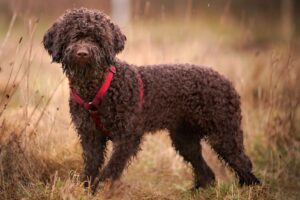
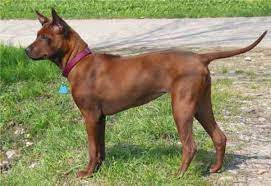

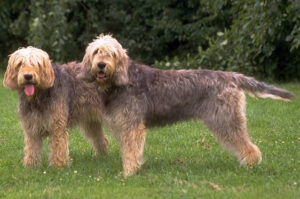





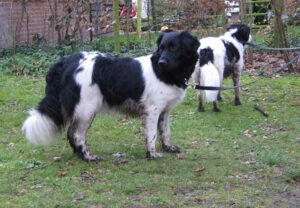









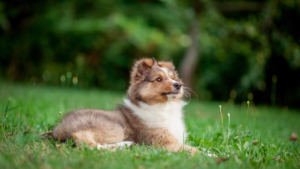

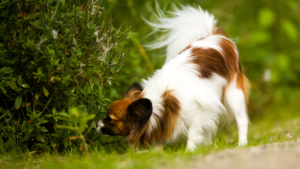


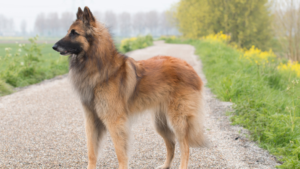




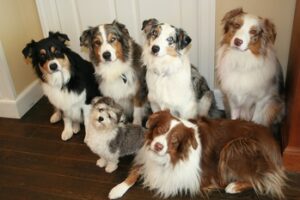






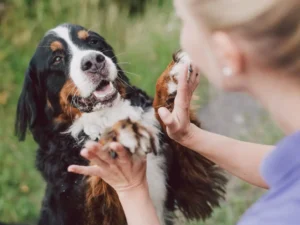

















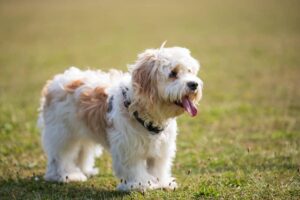


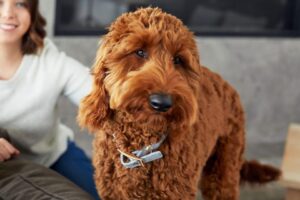












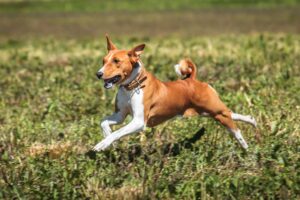

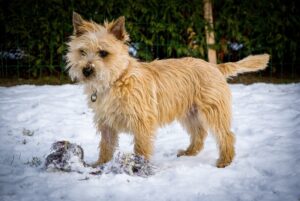

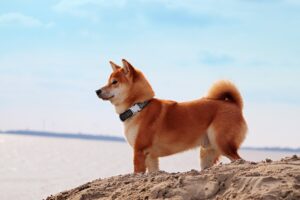





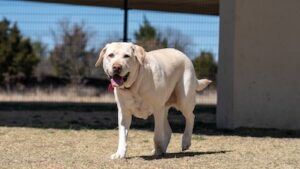




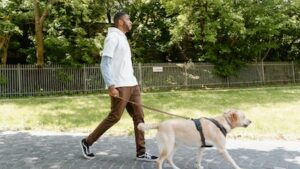




 Supervision
Supervision




















